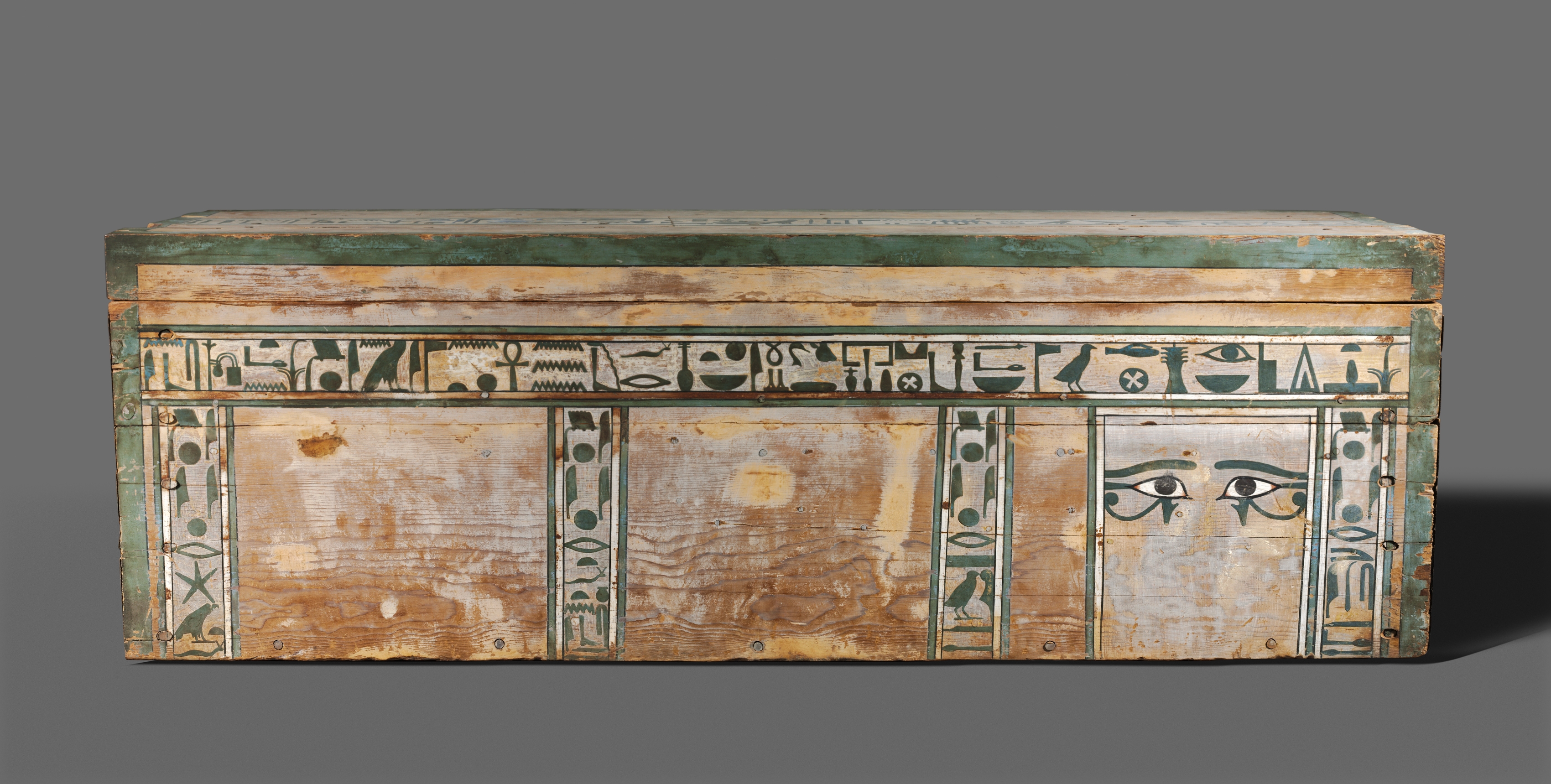The Cleveland Museum of Art
Collection Online as of April 18, 2024

Coffin of Senbi
c. 1918–1859 BCE
Overall: 70 x 55 cm (27 9/16 x 21 5/8 in.)
Location: 107 Egyptian
Description
The most common type of coffin during the Middle Kingdom took the shape of a rectangular box with lid. The mummy inside was placed on his left side, facing east, his head behind the two magical eyes. These—in the shape of human eyes, to which have been added the markings of a falcon's head—were supposed to enable him to behold the rising sun, reborn daily. The long horizontal inscriptions are prayers to Anubis (god of embalming) and Osiris (god of the dead) for offerings of food and drink and other items necessary for survival in the afterlife. The short vertical inscriptions place him under the protection of the gods of earth, sky, air, and moisture, as well as various funerary deities.- The Cleveland Museum of Art. Handbook of the Cleveland Museum of Art. Cleveland, OH: The Cleveland Museum of Art, 1991. Reproduced: p. 2 archive.orgGengler, Matthew. "You Ask, We Answer.” Cleveland Art: Cleveland Museum of Art Members Magazine 59, no. 4 (July/August 2019): 20. Reproduced and Mentioned: P. 20.
- {{cite web|title=Coffin of Senbi|url=false|author=|year=c. 1918–1859 BCE|access-date=18 April 2024|publisher=Cleveland Museum of Art}}
Source URL:
https://www.clevelandart.org/art/1914.716